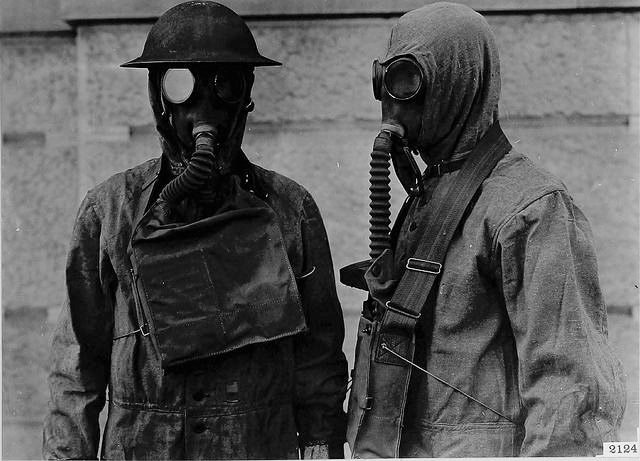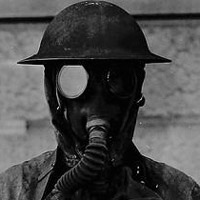
Chemical Development Section “summary of achievements” 1917-1918
My Social Studies Methods class at the University of Portland recently published a free multi-touch iBook – Exploring History: Vol II. It features ten engaging questions and historic documents that empower students to be the historian in the classroom. For more info on our project and free download of multi-touch iBook version click here.
To better publicize student work, I’m featuring each chapter in it’s own blog post. More in series here.
How did the experience of WWI shape international opinion of chemical weapons?
Chemical War by Erik Nelson Download as pdf (7.6MB)
New technologies changed international conflicts in the 20th century. The trench warfare and stalemate of WWI meant nations needed new ways of breaking enemy lines. Instead of firing gas shells, canisters were set in the battlefield, and military weather men waited for the wind to be in their favor. In 1915, chemical weapons were used for the first time on a large scale. It was this use of chemical weapons during World War I that shaped the world’s view of using these types of weapons. Find Erik on Twitter
Reflection by Erik Nelson
My grandfather used to tell me stories of climbing Mt. Rainier in his youth. I loved his stories. My imagination tried to relive those events, longing to know what that challenge was like. Growing up in Western Washington Rainier dominated our views on clear days; a monster of snow, ice and rock beckoning me. The challenge awaited, I needed to experience it for myself. No old person could tell me how or why, I needed to do it for myself.
As a young teacher, I am re-learning lessons I should have understood from my own past. Learning happens through experience. As a teacher, I need to focus on creating opportunities for my students to experience history and social studies for themselves so that they can draw their own conclusions. In the same way my grandfather’s stories enticed me to the mountain but could not tell me how or why, I can present opportunities for my students to develop their own hows and whys about social studies.
Creating my first DBQ has been an experience for me to learn as a teacher. It is very difficult for me to stay in the mindset of thinking how students might approach a document, let alone a series of documents. It is very easy for me to know how and why I am studying history, but not so easy for me to think how students might encounter the same sources. I am committed to treating my students as capable and independent learners, and DBQs like the ones we are creating in class can harness student independence and focus it into learning. As I curate source material and create accompanying questions to guide students I need to always keep the perspective of how they will approach the document in mind. This will allow me to give ownership of the creation of meaning and understanding to the students.
Going through this process has helped remind me that the learning found in experience can be truly rich, and should be the type of learning I am committed to regularly making available to my students. They will need to experience for themselves the lessons, and not simply be told an answer from this old guy. My own experiences on Mt. Rainier mean so much more to me that my grand father’s stories, but I might not have my own experiences if he had not presented the ideas and possibilities for me to explore on my own.
As a teacher, I hope I can always create opportunities for my students to learn through experience, and well crafted DBQs are a tool to facilitate that process. The irony is that I need to experience making more to make them well crafted. Further proof that the experiential process reveals the rich learning. ~ Erik Nelson
Image credit:
Image from page 70 of “Chemical development Section [and] Mechanical Research and Development Section; summary of achievements, 1917-1918” (1918)
Identifier: cu31924030765899
Title: Chemical development Section [and] Mechanical Research and Development Section; summary of achievements, 1917-1918
Year: 1918 (1910s)
Authors: United States. Army. Chemical Corps
Text appearing with image:
PLEXENE FIGHTING SUIT Treatment consisted in passing the silk fabric through a dye machine, then through the wringer rolls where the excess oil was expressed. The inner layer of dry cloth was found necessary, since the cloth was out as soon as treated, Simplexene does not attain the maximum degree of tackiness for two or three days, owing to the presence in the oil of a small amount of volatile spirits. However, by allowing the cloth to air for 48 hours before cutting, the innerlining could probably be dispensed with. The suits were designed in sizes to correspond to the overall sizes 36.40, and 44. The fighting suits have been distributed among various detachments using mustard gas in field tests, and in other places where protection against vapor is neededand where field conditions are approximated. These tests have shown that the suit gave satisfactory protection for considerable periods against mustard gas vapors.

